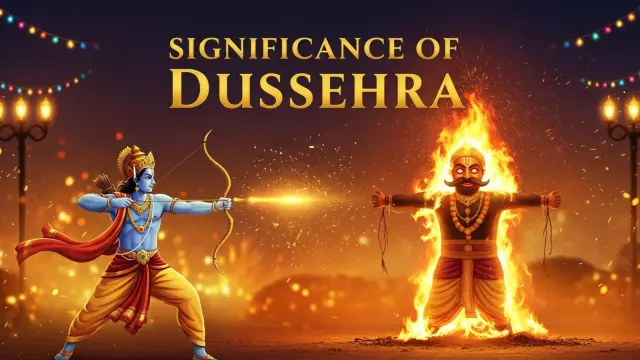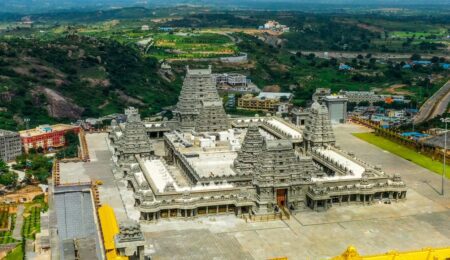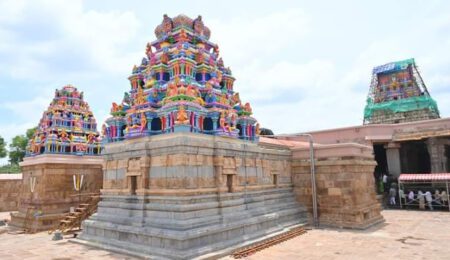Significance of Dussehra: Victory of Good over Evil
Introduction
Dussehra also known as Vijayadashami is one of India’s most resonant and uplifting festivals. Celebrated at the close of the nine-night Navratri observance, Dussehra marks the triumph of righteousness over wrongdoing, light over darkness, and hope over despair. More than pageantry and fireworks, the festival carries layered meanings: mythic victories from the Ramayana and Durga lore, moral instruction for individuals and societies, and an occasion for communities to renew bonds. In this article we explore the Dussehra significance, its link with Navratri, the mythological stories of Lord Ram and Maa Sita and Goddess Durga, regional variations in Dussehra celebrations in India, and how the message of the victory of good over evil remains relevant today.
Historical & Mythological Significance
The Ramayana connection: Lord Ram and Ravana
Many Dussehra celebrations center on the Ramayana narrative. According to the epic, Lord Ram the divine prince and an avatar of Vishnu wages a righteous war to rescue Maa Sita after she is abducted by Ravana, the ten-headed king of Lanka. The climactic battle ends on the tenth day (Dashami), with Lord Ram vanquishing Ravana. This victory symbolizes the destruction of ego, tyranny, and adharma (unrighteousness). In many regions, burning effigies of Ravana (often accompanied by those of Kumbhakarna and Meghanada) is a ritual spectacle; it is both cathartic and instructive: evil may appear powerful, but truth and dharma ultimately prevail.
Durga and Mahishasura: The fierce mother’s victory
In Eastern India and elsewhere, Dussehra is also the culmination of Durga Puja — commemorating Goddess Durga’s ten-day battle with the buffalo-demon Mahishasura. Durga’s eventual triumph on Vijayadashami restores cosmic balance and frees the world from demonic forces. The Durga Puja rituals from vibrantly decorated idols to large community bhogs and final immersion (visarjan) — emphasize the protective, nurturing, and corrective aspects of the divine feminine.
The universal theme: Good vs Evil
Whether through Lord Ram’s righteous warfare or Goddess Durga’s fierce compassion, Dussehra dramatizes a universal moral: the moral arc bends toward justice. Both stories teach that courage, sacrifice, discipline, and adherence to dharma are the weapons that defeat arrogance, greed, and injustice. This timeless message resonates across beliefs and cultures, which is why the Dussehra significance extends far beyond ritual into everyday ethical life.
Cultural Importance Across India
Dussehra is not a single ritual it’s a rich mosaic of regional traditions that together illustrate India’s cultural diversity and shared values.
North India: Ram Leela and Ravana Dahan
In the north, Dussehra is synonymous with Ram Leela dramatic reenactments of episodes from the Ramayana. Entire communities stage elaborate plays culminating in the dramatic burning of Ravana’s effigy. These events combine folk theatre, music, and fireworks, drawing crowds who relish the moral drama and communal celebration. The emphasis is on Lord Ram’s triumph and the collective joy of justice being restored.
West Bengal & East India: Durga Puja immersion
In West Bengal, Odisha, and parts of Assam and Bihar, Dussehra coincides with the last day of Durga Puja. Giant pandals (temporary thematic temples) house ornate idols of Goddess Durga, and families gather for devotional songs, cultural programs, and the communal bhog. The final act — immersing the Durga idol in rivers or the sea — is both festive and poignant: a symbolic farewell until the goddess returns next year.
South India: Mysore Dussehra, Golu displays, and temple rituals
In Karnataka, the Mysore Dussehra is a state spectacle: the illuminated Mysore Palace, royal processions, caparisoned elephants, and cultural performances attract visitors from across India and abroad. In Tamil Nadu and Andhra Pradesh, the Navratri tradition of Golu (doll displays) ends with Dussehra rituals in temples and homes. These southern customs stress devotion, artistry, and family participation.
Maharashtra & Western India: Apta leaves and processions
In Maharashtra, people exchange Apta leaves called “sonpatta” or “golden leaves” as tokens of goodwill and blessing for prosperity. Local fairs, processions, and community prayers mark the day across towns and cities in western India.
Global celebrations: Indian diaspora and cultural outreach
Across the world, Indian communities celebrate Dussehra through Ram Leela performances, Durga Puja pandals, and cultural festivals. The diaspora adapts rituals to local contexts while preserving the core message: courage, dharma, and the victory of good over evil.
Symbolism & Values
Moral and spiritual symbolism
- Victory of Truth and Righteousness: Dussehra enshrines the idea that satya (truth) and dharma (righteousness) ultimately prevail.
- Courage and Sacrifice: Lord Ram’s and Durga’s struggles remind us that ethical action often requires bravery and personal sacrifice.
- Restoration of Order: The festival symbolizes the restoration of cosmic and social balance after chaos and moral decay.
Lessons for modern life
- Resilience: Personal hardships can be framed as battles where persistence and right action bring change.
- Unity and Community: Festivals bring people together; Dussehra’s rituals emphasize cooperation, shared responsibility, and collective healing.
- Moral Clarity: In an era of complex ethical dilemmas, Dussehra prompts reflection on what constitutes righteous action from daily choices to civic responsibilities.
Modern-Day Relevance
Overcoming personal struggles
Many people use Dussehra as a marker for inner transformation: they symbolically “burn” their internal Ravanas — habits and tendencies such as anger, dishonesty, or envy. The festival encourages introspection, personal resolution, and concrete steps toward self-improvement.
Confronting societal challenges
On a broader scale, the theme of confronting injustice resonates with contemporary struggles against corruption, discrimination, and misinformation. Dussehra reminds citizens that ethical leadership, moral courage, and collective resolve are needed to dismantle entrenched wrongs and rebuild just institutions.
Festive Elements: Food, Rituals, and Community
Rituals and cultural programs
From early-morning prayers to evening Ram Leela performances, Dussehra’s activities vary widely but share a communal heart: people gather, enact, and witness stories that reaffirm shared values. Schools and cultural groups stage plays; local governments and cultural institutions host fairs, concerts, and exhibitions.
Traditional foods and feasts
Culinary traditions vary by region: in Bengal, elaborate bhogs and sweets mark Durga Puja; northern fairs serve savory street foods alongside fireworks; southern households share special meals during Golu visits. These foods are both offerings to the divine and expressions of communal joy.
Family and community bonding
Dussehra is a time for family reunions, exchanging Apta leaves, visiting pandals, and taking part in neighborhood festivities. The festival’s communal nature is central the victory of good is celebrated together, reinforcing social cohesion and mutual care.
Conclusion
Dussehra (Vijayadashami) is more than a seasonal spectacle it is a moral mirror pointing toward courage, truth, and compassion. Through the tales of Lord Ram and Maa Sita, and the fierce victory of Goddess Durga, the festival teaches that righteousness can overcome the most daunting adversities. Whether you witness the thunder of Ravana’s effigy, the emotional immersion of a Durga idol, or the illuminated grandeur of Mysore Palace, the message is the same: stand for what is right. This Dussehra, reflect on your own victories of good over evil acts of honesty, moments of courage, choices that restore balance. Those personal victories are the living essence of Vijayadashami.
Frequently Asked Questions (FAQ)
Q1: Why is Dussehra celebrated?
A: Dussehra celebrates the victory of good over evil commemorating Lord Ram’s defeat of Ravana in the Ramayana and Goddess Durga’s victory over Mahishasura. It marks moral renewal and the conclusion of Navratri.
Q2: What is the story behind Ravana Dahan (effigy burning)?
A: Ravana Dahan reenacts Lord Ram’s triumph over Ravana. Burning the effigy symbolizes the destruction of arrogance, greed, and immorality and serves as a public reminder that evil is ultimately conquerable.
Q3: How is Dussehra linked to Durga Puja?
A: In many regions, Dussehra coincides with the final day of Durga Puja. The day marks Goddess Durga’s victory over Mahishasura and often culminates in the immersion (visarjan) of Durga idols.
Q4: What are common Dussehra traditions across India?
A: Traditions include Ram Leela performances celebrating Lord Ram’s story, Ravana effigy burning, Durga Puja pandals and idol immersion, Golu displays in the south, Mysore’s royal procession, and exchanging Apta leaves in Maharashtra.
Q5: What lessons does Dussehra teach in a modern context?
A: Dussehra teaches resilience, moral courage, and the importance of truth and justice. It encourages individuals to confront personal flaws and motivates society to tackle injustice with integrity and collective action.
Q6: When is Dussehra celebrated each year?
A: Dussehra falls on the tenth day (Dashami) of the bright half of the lunar month of Ashwin, immediately after the nine nights of Navratri. The exact Gregorian calendar date changes each year according to the Hindu lunar calendar.




Leave a Comment